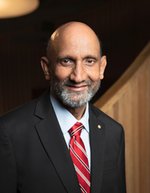
Professor Chennupati Jagadish AC is an Emeritus Professor of Physics and Electronic Materials Engineering in the Research School of Physics at the Australian National University. He has published more than 790 journal papers in semiconductor physics, materials science, optoelectronics and nanotechnology. Professor Jagadish is the Editor-in-Chief of Applied Physics Reviews, editor of 2 book series, and serves on editorial boards of 20 other journals. He is a fellow/foreign fellow of 16 science and/or engineering academies in Australia, the US, the UK, Europe, China and India. He has received many Australian and international awards, including a UNESCO medal for his contributions to the development of nanoscience and nanotechnologies, IUMRS Somiya Award, IEEE Nanotechnology Pioneer Award, Lyle Medal, Boas Medal, Beattie Steel Medal and Pravasi Bharatiya Samman award from the President of India in 2023. He has been an Australian Research Council (ARC) Federation Fellow and an Australian Laureate Fellow. Professor Jagadish is a Fellow of the Royal Society, and has received honorary doctorates from Surrey and Nottingham Trent universities. He was elected a Fellow of the Australian Academy of Science in 2005 and became President of the Academy in 2022.
There have been 19 past presidents of the Academy since the Academy was founded in 1954.
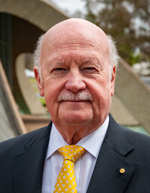
2018–2022
Professor John Shine was Executive Director of the Garvan Institute of Medical Research from 1990 to 2011. He is Professor of Molecular Biology and Professor of Medicine at UNSW Sydney. The ‘father of gene cloning’, Professor Shine was the first to clone human hormone genes and the first to sequence the replication of a cancer-causing virus. These and other pioneering discoveries by Professor Shine helped to launch the biotechnology revolution that has transformed medicine and agriculture. Professor Shine was appointed to the board of the biopharmaceutical company CSL Ltd in 2006 and then as Chairman from 2011 to 2018. He has a longstanding commitment to the translation of research discoveries into advances in health care for the social and economic benefit of the community. He received the Prime Minister’s Prize for Science in 2010 for his scientific discoveries and research leadership. In 2020, Professor Shine was elected a Fellow of the Royal Society.
2014–2018
Professor Andrew Holmes is Melbourne Laureate Professor Emeritus at the University of Melbourne, and Emeritus Professor at Imperial College, London. In October 2004 he was appointed ARC Federation Fellow and inaugural veski fellow at the Bio21 Institute at the University of Melbourne and at CSIRO Molecular and Health Technologies. Professor Holmes has been recognised for his groundbreaking work on light-emitting polymers. He has also been the recipient of many awards including the Royal Society’s Royal Medal and the Descartes Prize. He was elected to the Academy in 2006 and served as Foreign Secretary from 2010 to 2014.
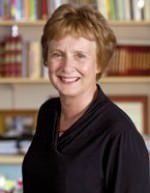
2010–2014
Professor Suzanne Cory is one of Australia's most distinguished molecular biologists. She was Director of the Walter and Eliza Hall Institute from 1996 to 2009 and is Professor of Medical Biology and Vice-Chancellor’s Fellow at the University of Melbourne. Cory is also Honorary Professorial Fellow at The Walter and Eliza Hall Institute. Her research has had a major impact in the fields of immunology and cancer and her scientific achievements have attracted numerous honours and awards.
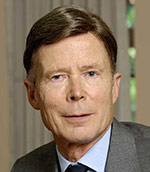 2006–2010
2006–2010
Professor Kurt Lambeck has been professor of geophysics at the Research School of Earth Sciences, Australian National University since 1977 and Head of the School since 1984. His work is on ‘glacial rebound’, which studies how the sea responds to changing levels, its impact on civilisations and the future.
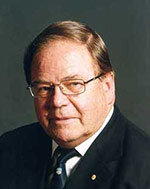
2002–2006
Dr Jim Peacock was Chief of the Division of Plant Industry, CSIRO, Canberra, 1977–2003 and Australia’s Chief Scientist 2006–2008. He is interested in molecular plant science, genomics and gene technology. He established the CSIRO Discovery Centre in Canberra and founded a number of agribusiness companies including the Gene Shears Company.
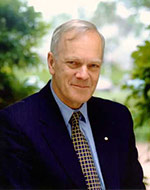
1998–2002
Professor Brian Anderson was Professor of Systems Engineering 1981–94 and Director, Research School of Information Sciences and Engineering, Australian National University 1994–2002. He then moved to the newly formed National ICT Australia as inaugural CEO and later Chief Scientist. His areas of expertise are control systems, signal processing and telecommunications.
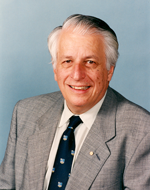
1994–98
Sir Gus Nossal was Director of the Walter and Eliza Hall Institute of Medical Research 1965–96 and Professor of Medical Biology at the University of Melbourne. He is distinguished for his contributions to the fields of antibody formation and immunological tolerance. In 1996 he was one of the founders of Foursight, a company providing advice on R&D and science to companies, investment institutions, academics and government.
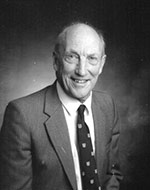
1990–94
Professor David Craig was Professor of Physical and Theoretical Chemistry at the Australian National University 1967–84, having previously held professorships at the University of Sydney and University College, London. He has published in the fields of quantum chemistry, and the chemistry of liquid and molecular crystals.
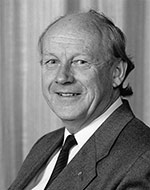
1986–90
Professor David Curtis was Professor of Pharmacology, Australian National University 1966–88 and Director and Howard Florey Professor of Medical Research, John Curtin School of Medical Research 1989–92. He is interested in the identification and pharmacology of central transmitters in the mammal.
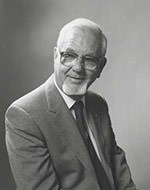
1982–86
Professor Arthur Birch, known as the grandfather of the contraceptive pill, was Professor of Organic Chemistry, Australian National University from 1967. Earlier he was at Oxford 1938–48, at Cambridge 1948–52, and Professor of Organic Chemistry, University of Sydney 1952–55 and Manchester University, England 1955–67.
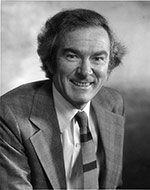
1978–82
Dr Lloyd Evans worked for the Division of Plant Industry, CSIRO, where he was at one stage the biologist in charge of the establishment of CERES, the controlled environment research facility known as the phytotron. He was Chief of the Division from 1971 to 1978.

1974–78
Sir Geoffrey Badger spent most of his career at the University of Adelaide, where he was Professor of Organic Chemistry, 1955–64, then Deputy Vice-Chancellor and Vice-Chancellor, 1966–77. He was the first Chairman of ASTEC (Australian Science and Technology Council) 1977–82. He studied cancer-producing compounds and examined chemicals from plants for their biological activity.
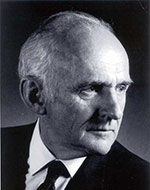
1970–74
Sir Bob Robertson was Director of the Research School of Biological Sciences, Australian National University 1973–78. Earlier he was Professor of Botany, University of Adelaide 1960–69 and Master of University House, ANU 1969–73. He studied respiration and the energy cycle in plants.
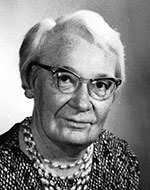
1970
Professor Dorothy Hill, the first woman elected to the Academy, spent most of her career at the University of Queensland, where she was Research Professor of Geology 1959–72. She also served as a Second Officer in the Women’s Royal Australian Naval Service (WRANS) during World War II. She was known for her work on palaeozoic coral.
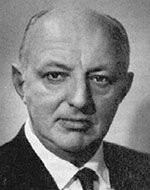
1969–70
The Academy’s first Secretary physical sciences, Dr David Martyn was one of four research officers selected to join the Australian Radio Research Board, established under the Council for Scientific and Industrial Research (now CSIRO) in mid 1929, Martyn moved to Australia where it became obvious that his real strength was in the theoretical side of science. Transferring to Stromlo in 1944, he was appointed officer-in-charge of the RRB station in Camden, NSW.
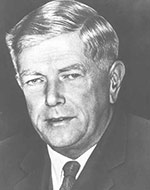
1965–69
Sir Frank Burnet was Director of the Walter and Eliza Hall Institute of Medical Research, Melbourne 1944–66 and in 1960 was awarded the Nobel Prize for physiology or medicine with Peter Medawar for demonstrating acquired immune tolerance.
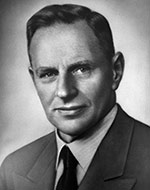
1961–65
Returning from a very successful time in Trinity College, Cambridge, where he was elected a Fellow, Sir Thomas Cherry took on the role of Professor of Mathematics at Melbourne University, where he stayed from 1929 to 1952. Interested in science education, during this time, Cherry was Chairman of the mathematics standing committee of the University’s Schools Board (1929–1963) and was responsible for two major reforms of the mathematics syllabi of Victorian schools.
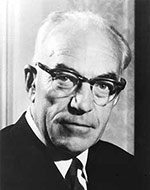
1957–61
Sir John Eccles was Professor of Physiology and Biophysics at the State University of New York, Buffalo 1968–75. Earlier he was Professor of Physiology at the Australian National University 1951–66 and was awarded the Nobel Prize for medicine in 1963 (jointly) for his work on the synapse of the peripheral nervous system.
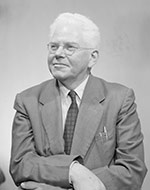
1954–57
Sir Mark Oliphant was Director of the Research School of Physical Sciences, Australian National University 1950–63 and continued as professor at the Australian National University 1964–67. There he initiated the design and construction of the world's largest (500MJ) homopolar generator. He later served as Governor of South Australia 1971–76.
© 2026 Australian Academy of Science